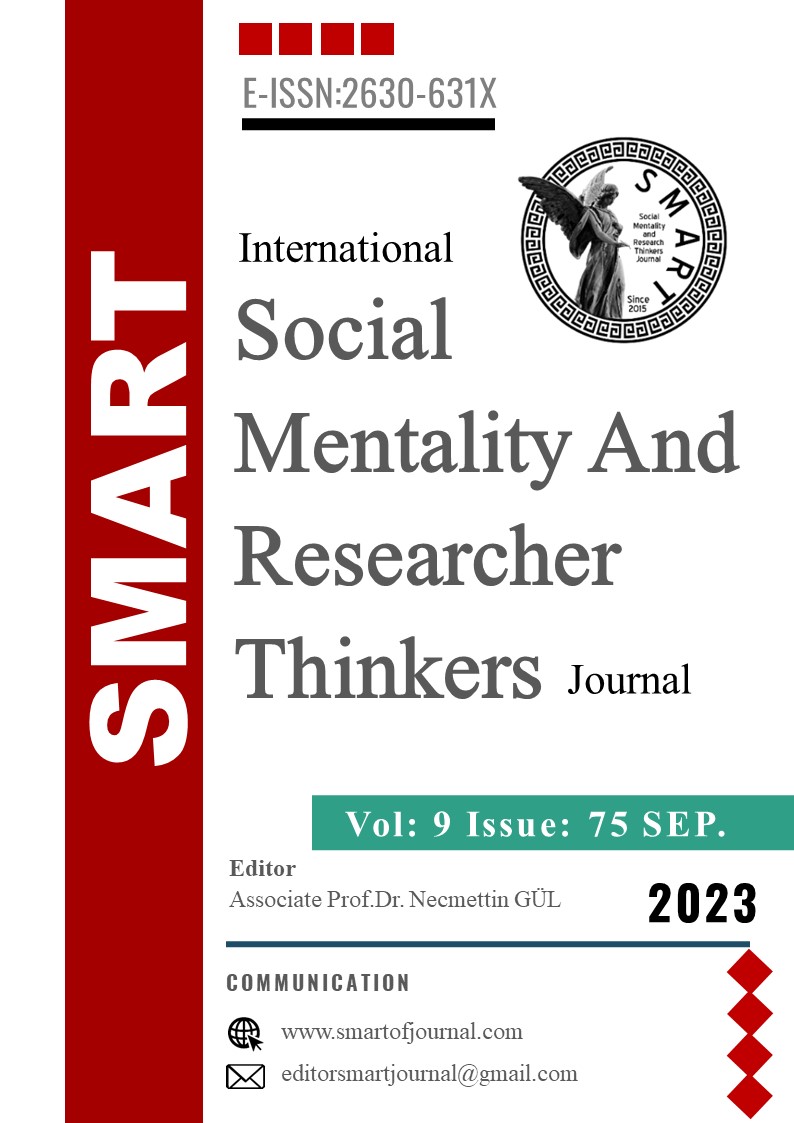Horon Müziklerinin Kemana Uyarlanmasına Yönelik Bir Öğretim Yaklaşımı ve Kullanılabilirlik Durumunun Değerlendirilmesi
Author :
Abstract
Araştırmanın amacı, geleneksel olarak kemençe ile icra edilen horon müziklerinin karakteristik müzikal yapısını bozmadan kemana uyarlamak ve uygulanan yöntemin verimliliğini değerlendirmektir. Araştırmanın hedef evreni horon müzikleri, ulaşılabilir evreni ise Romiko ve Çaykara horon müzikleridir. Araştırmanın deneysel boyutuna ilişkin çalışma grubunu Gazi Üniversitesi Eğitim Bilimleri Enstitüsü Güzel Sanatlar Eğitimi Ana Bilim Dalı Müzik Eğitimi Bilim Dalında öğrenim gören 6 keman öğrencisi oluşturmaktadır. Araştırmanın betimsel boyutunda, alan yazın taranarak keman eğitimi ve horon müziği kuramsal çerçevede açıklanmış, Romiko ve Çaykara horonları geleneksel olarak kaydedilmiş görsel ve işitsel örnekler üzerinden notaya alınarak keman uyarlamaları ortaya koyulmuştur. Uyarlamaların, hazırlanan Öğrenme Alanı ve Kazanımlar Tablosu içerisinde bulunan kazanımlara uygun olup olmadığıyla ilgili alan uzmanlarından görüş alınmış, uyarlamalar müzikal olarak analiz edilmiş ve uyarlamalara yönelik alıştırmalar yazılmıştır. Keman Performans Değerlendirme Formu kullanılarak alan uzmanlarınca değerlendirilen performanslar sonucunda uyarlamaların ve dolayısıyla kullanılan yöntemin etkililiği belirlenmeye çalışılmıştır. Bu amaç doğrultusunda tek gruplu ön test-son test deneysel desen kullanılmıştır. Öncelikle çalışma grubunun hazırbulunuşluğunu ve denkliğini belirlemek amacıyla keman dersine yönelik tutumlarına ve keman alanına yönelik genel bilgi düzeylerine bakılmıştır. Ardından, uyarlamalar üzerinden deney ve kontrol grubuyla haftada 1 saat olmak üzere toplam 8 ders yürütülmüş ve ön test-son test sonuçları (grup içi) karşılaştırılmıştır. Daha sonra ise, deney ve kontrol grubundaki öğrencilerin seçilen 2 horon eserine ilişkin son test puanları (gruplar arası) karşılaştırılarak 8 haftalık horon ezgilerine dayalı keman eğitiminin etkililiği belirlenmiştir. Grup içi keman performans puanlarının karşılaştırılmasında Wilcoxon İşaretli Sıralar testinden, gruplar arası keman performans puanlarının karşılaştırılmasında ise bağımsız gruplar Mann-Whitney U testinden yararlanılmıştır. Araştırma sonucunda, deney grubu öğrencilerinin 8 haftalık horon ezgilerine dayalı keman eğitimi sonrası değerlendirilen keman performanslarının anlamlı bir şekilde yükseldiği ve uygulanan yöntemin belirlenen 9 kazanım üzerinde de ‘büyük’ etkisi olduğu bulunmuştur. Kontrol grubu öğrencilerinin ise, 8 haftalık geleneksel keman eğitimi sonrası değerlendirilen keman performanslarının ve belirlenen 9 kazanımdan bazılarına ilişkin puanlarının istatistiksel olarak anlamlı bir şekilde yükseldiği bulunmuştur. Sonuç olarak, 8 haftalık horon ezgilerine dayalı keman eğitimi uygulamasının, deney grubu öğrencilerinin keman performans düzeyini, kontrol grubu öğrencilerine göre anlamlı bir şekilde arttırdığı anlaşılmıştır. Bu sonuçlar bağlamında, horon müziği uyarlamalarının keman öğrencileri tarafından seslendirilebileceği, horonların keman eğitiminde geçerli bir eğitim materyali olabileceği, keman eğitim programlarında geleneksel müziklerimizin yer alabileceği ve bu sayede de geleneksel müziklerimizin bir batı müziği çalgısıyla icra edilerek evrenselliğe taşınmasının mümkün olabileceği düşünülmektedir.
Keywords
Abstract
The aim of this research is to adapt horon music traditionally performed with the kemenche to the violin without disturbing its characteristic musical structure and to evaluate the effectiveness of the applied method. The target population of this search is horon music and the accessible population consists of Romiko and Çaykara horon music. The experimental component of this searching volves a study group consisting of 6 violin students enrolled in the Department of Music Education within the Fine Arts Main Discipline of Gazi University Institute of Educational Sciences. In the descriptive dimension of this search violin education and horon music were explained within a the oretical framework by conducting a literature review. The Romiko and Çaykara horons traditionally recorded as visual and auditory examples were transcribed into sheet music to demonstrate violin adaptations. The adaptations were evaluated by field experts to determine whether they align with the learning domain and achievement table prepared. The adaptations were also subjected to musical analysis and exercises were developed specifically for the adaptations. The effectiveness of the adaptations as well as the method used was assessed through the evaluation of performances by field experts using the prepared Violin Performance Evaluation Form to determine the effectiveness of the adaptations and the method employed. To achieve this goal a single-group pre-test-post-test experimental design was employed. Firstly the attitudes towards violin lessons and general knowledge about the violin field were examined to determine the readiness and equivalence of the study group. Subsequently the experiment and control groups received a total of 8 lessons each lasting 1 hour per week based on the adaptations and the pre-test and post-test results within each group were then compared to evaluate the outcomes. Furthermore the effectiveness of the 8-week violin training based on the selected two horon pieces was determined by comparing the post-test scores of students in the experimental and control groups (between-group comparison). The within group comparison of violin performance scores was conducted using the Wilcoxon Signed-Rank test while the between-group comparison of violin performance scores was performed using the independent samples Mann-Whitney U test. This search findings indicate that the violin performance of the students in the experimental group significantly improved after the 8-week violin training based on horon melodies and the applied method had a 'large' effect on the identified 9 achievements. The students in the control group also showed statistically significant improvement in their violin performance and some of the identified achievements after the 8-week traditional violin training. Therefore it can be concluded that the 8-week violin training based on horon melodies significantly increased the violin performance level of the students in the experimental group compared to the control group. Inlight of these results it can be considered that horon music adaptations can be performed by violin students and horon dances can be a valid educational material in violin training. It is also possible to include our traditional music in violin education programs allowing traditional melodies to be performed with a Western musical instrument thus achieving universality.
